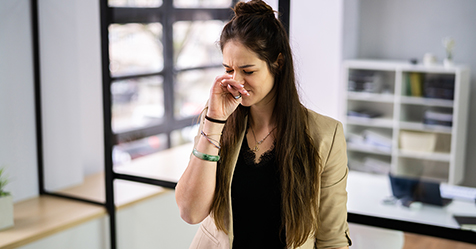Spring is here, and with it comes the beginning of peak pest season. There are many circumstances at play that make spring and summer the primary seasons for pest activity. As a facility manager, knowing which pests to look for and how to avoid them this time of year is critical in pest prevention. Below is a list of factors that affect pests’ seasonal activity, as well as which pests to keep an eye on as the warmer months approach.
External seasonal influences
The warmer temperatures that roll in with springtime and summer directly affect the behaviors and developments of many pests. It’s typical for pests to lay dormant in the wintertime, and then reenter their ecosystems in the spring. Warmer weather also signals mating seasons for many pests, leading to rapid insect development making pest populations boom.
It’s well-known that spring showers bring summer flowers, but people often fail to consider how the increase in moisture can also provide favorable conditions for pest activity. Pests find food and shelter more easily this time of year. Grass is no longer dormant, and it, as well as ground covering landscape, regrow during the warmer months to provide a thick shelter for pests. Summertime also means more sunlight hours in the day and shorter nights. Pests enjoy these extra hours of daylight just as much as we do because it gives them more time to scavenge for food.
Most common seasonal pests
Ants—While often seen as nuisance household pests, ants hold strength in numbers. They are social insects, and sighting a few can indicate a large colony of thousands hiding somewhere on your facility property. Ants are attracted to sugar, plant materials, and leftover human food, which is why it’s important that common areas in your facility are frequently monitored for spills, leftover trash and other food particles. If you find ants, your pest management professional can track the pheromone trail to help uncover any entry points as well as where their nest is located inside or outside the building.
Cockroaches—Cockroaches are one of the most adaptive, resilient, and persistent pests. With more than 50 types of cockroaches living in the United States, you’re likely to come across one in your facility at some point. Exceptionally good at hiding in small cracks and crevices, cockroaches are nocturnal and will not frequently be seen in the daytime. Instead, they will seek out food and water overnight. It’s important that you keep storage closets and common spaces in your facility free of clutter where cockroaches shelter. Be sure trash is always kept in proper receptacles and is taken out at least daily. Rinse bins out once a month to avoid buildup at the bottom that can attract cockroaches and other pests.
Flies—While small in size, flies can cause big problems. Not only are they a major nuisance, but they are also considered one of the dirtiest pests because they feed on garbage, feces, carcasses and food waste—and spread multiple diseases. Flies breed rapidly, so remaining proactive in your treatment of flies is crucial to avoiding a larger issue. Ensure your employees properly close doors and windows behind them to help keep flies out. For the same reason, screens should be replaced or repaired on windows and doors when they are damaged or missing. Make sure food and sweets are not kept out for extended periods of time, as these attract flies.
Mosquitoes—Mosquitoes are warm-weather insects through and through, and if there is as little as a thimbleful of water, these pests can breed rapidly near your facility. Mosquitoes can also carry dangerous diseases such as Eastern equine encephalitis, Dengue fever, and West Nile virus. Facility managers should limit standing water near outdoor common areas where people gather.
With warmer weather around the corner, facility managers should be aware that pest pressures are increasing. While some pests may seem like just a bother, many pose health risks and are difficult to eliminate once they establish themselves in or around your facility. When it comes to pest management, being proactive is always better than being reactive.




